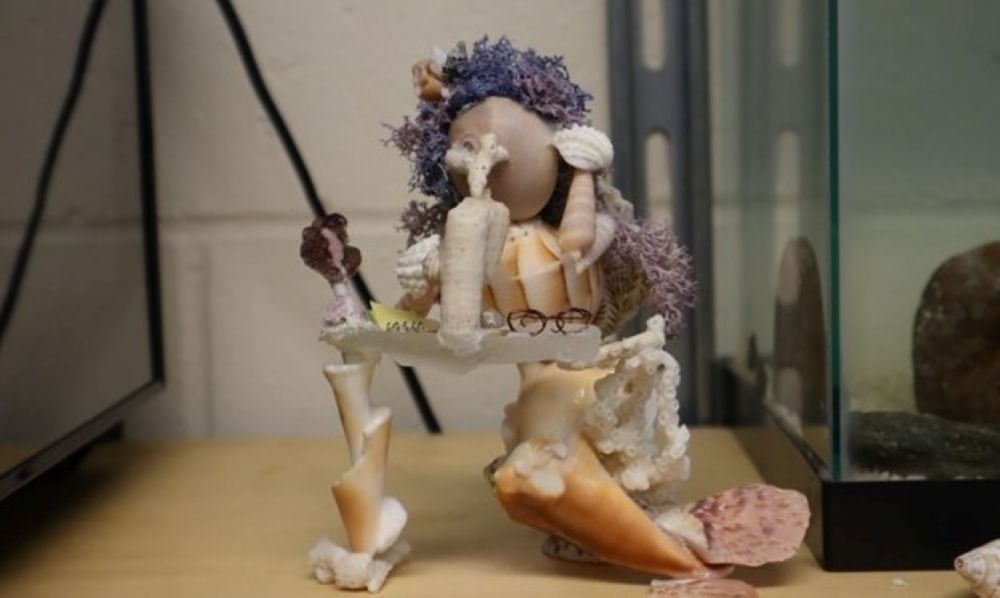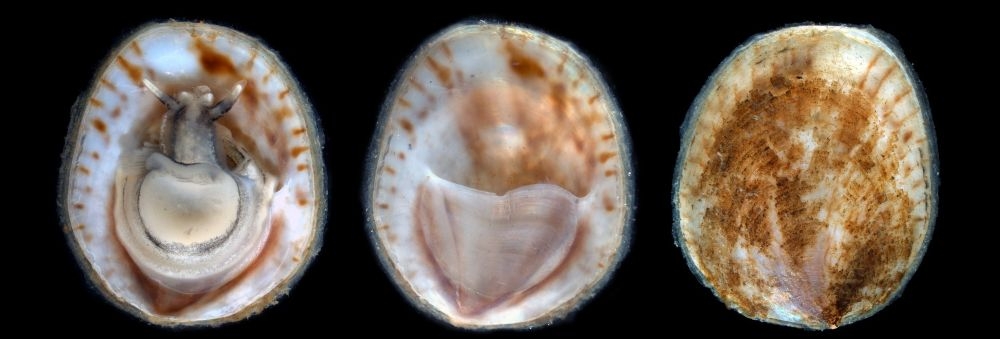Do Light and Darkness Shape the Patterns on Shells? A Grass Fellow Investigates

Kyra Schapiro knows how to find a good shell. A self-professed sheller – “ Yes, it’s a noun,” she said – Schapiro has amassed hundreds of seashells. “It’s the patterns and the beauty” that compels her to shell, she explained. And even at a young age, she could “respect that something was making this [shell pattern] with some sort of plan or intention.”
From her hours of searching the surf of Hillsboro Beach, Florida, Schapiro couldn’t ignore certain patterns repeating on each shell she saw. Like the Fibonacci sequence -- mathematical spirals seen in nature, from hurricanes to flower petals -- how do these patterns emerge? What mechanisms has nature evolved to design these displays, and what determines one shell’s subtle differences from another?

These questions bubbled in the background while Schapiro trained as a neuroscientist at the University of Pennsylvania and searched for patterns in cognition and working memory. After yet another painstaking attempt to record single-neuron activity in monkeys, she sought solace in shells – this time, as a scientist.
Pattern switch
As a 2025 Grass Fellow at MBL and postdoctoral scientist at Brandeis University, Schapiro has taken to a different type of shelling. For the first time, she’s collecting shells with their living occupant: the zebra nerite snail. She houses dozens of snails in experimental tanks and tracks how their patterns grow and change under different conditions.
Zebra snails have the right kind of shell pattern to study. They have diagonal bands, so pigment stripes the shell in a different direction from the shell’s growth. Under normal conditions, the biology follows a blueprint, painting a continuous design of dark and light stripes.
But when something changes in the environment – access to light, perhaps – the diagonal striping stops, leading to a dramatic pattern change, Schapiro said. Instead of resuming the original pattern, they switch to a new design, laying down pigment according to a different template. “My basic theory is that they are somehow sensing where in the pattern they left off,” using the new template to guide their future stripes, Schapiro said
Schapiro has six collection tanks: one control and five with unique manipulations. She aims to see which conditions disrupt shell pattern formation.
In a light tank, zebra snails experience constant brightness, while the algae blooms flourish. In a nearby dark tank, snails experience the opposite, with 24-hour midnight waters. Schapiro hypothesizes that information from light triggers which band (light or dark) gets laid down next. Under normal lighting conditions, the light and dark stripes alternate. But if an input, such as light, is shut off, the snail will only produce dark bands.
A few snails developed a pattern change prior to arriving at the Grass Lab in May, boosting support for Schapiro’s hypothesis. Perhaps the days spent in dark shipping containers extended the dark stripes.
She also has three wallpapered tanks: plain white, striped, and checkered. “If I put them in an environment where they no longer blend in, but rather stand out, can they adapt?” Will the snails change the direction of the stripes, she wonders, in response to a different background? These are questions informed by evolution, which implies some shell pattern will best equip a snail for its environment.
Tapping into the (neural) network
In addition to weeks of behavioral observation, Schapiro will probe the organism’s nervous system, looking for a neural response to light. But a snail’s physiology makes it difficult to electrically record from the nerves. “Snail nerves are deeply embedded, and the tissue is thin,” Schapiro said.
But one of the benefits of being at the MBL, Schapiro said, is access to resources and expertise to experiment with different methods.
“There are so many people who know different things…I can just wander around and ask, ‘What methods do you use? Can you tell me about this? Am I doing this right?’”
This has allowed her to pick up a peculiarity between the local species of snail, Crepidula fornicata, and her experimental zebra nerites, Vittina turrita.

In probing their neural networks, Schapiro has found that V. turrita has many more branches than C. fornicata, which seem to have more of a ‘net’. She wonders if there’s a connection between the number of branches and the number of stripes on the shell. If there is, that would strongly indicate a neural basis for pattern formation.
If neuroscience underlies pattern change, then Schapiro has tapped into something in ways that haven’t been explored before. Perhaps snails are neurologically primed to create their own designs, patterned by whatever environment they experience.